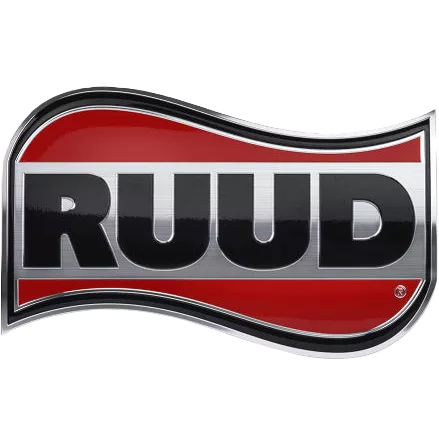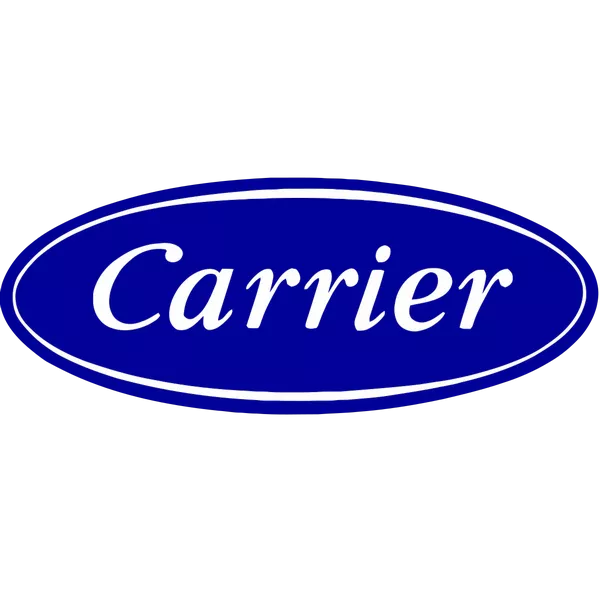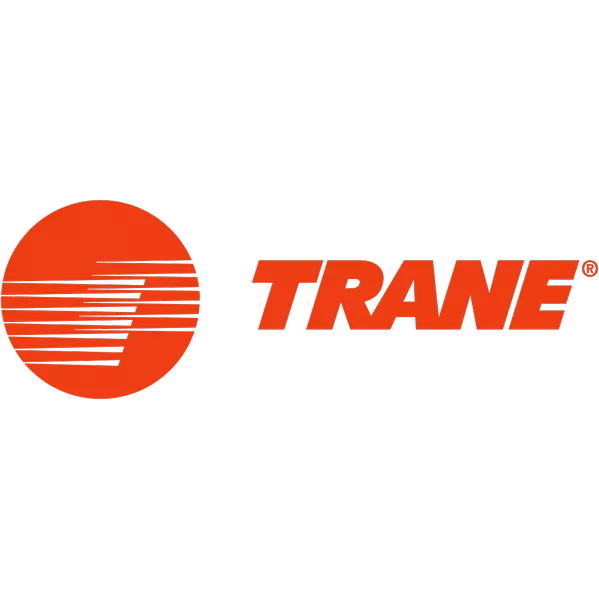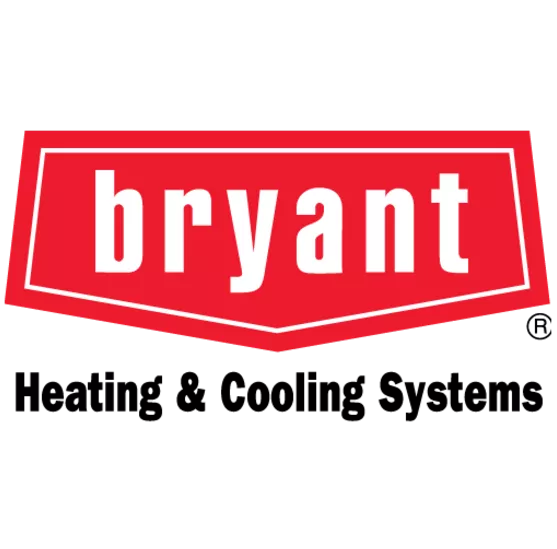Ruud: With a reputation for practical engineering and a broad North American distributor network, this maker’s Endeavor generation concentrates on corrosion resistance, balanced acoustics, and clear good-better-best steps that do not overwhelm buyers. For this comparison the spotlight is the Endeavor Prestige UA19AY variable-speed central AC, the Endeavor Prestige U98MV modulating gas furnace, and the Endeavor Prestige UP19AY variable-speed heat pump. The analysis below looks at how these three operate as a coordinated, communicating set.
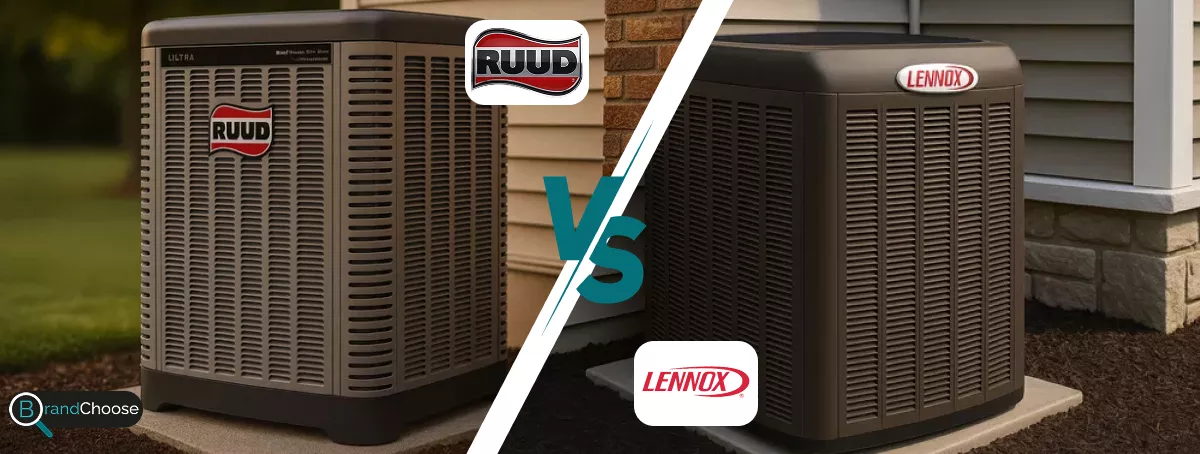
Lennox: Known for chasing ultra-low sound and headline efficiency in its Signature tier, this manufacturer aims its top line at homeowners who want cutting-edge performance wrapped in a refined user experience. Here the focus is the SL28XCV variable-capacity central AC, the SLP99V modulating gas furnace, and the SL25XPV variable-capacity heat pump, and the judgments that follow reflect how this trio behaves when configured as a matched system.
Product Selection
| Primary Use Case | Ruud | Lennox | ||
| Air Conditioner | UA19AY | 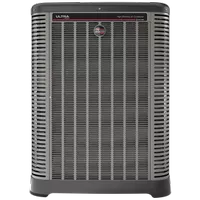 |
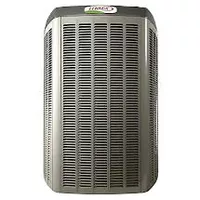 |
SL28XCV |
| Gas Furnace | U98MV | 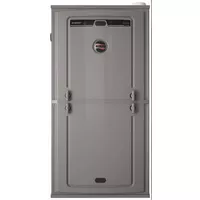 |
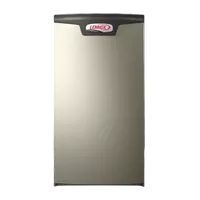 |
SLP99V |
| Heat Pump | UP19AY | 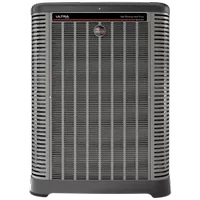 |
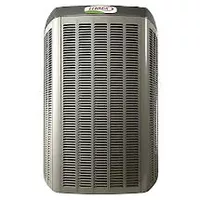 |
XP25 |
🟦 Ruud: The Endeavor ladder is intentionally straightforward — Prestige at the top, then Classic Plus and Classic — so moving up or down in efficiency, sound, and features feels linear rather than like decoding near-duplicates. The UA19AY + U98MV + UP19AY stack appears often in 2 to 4 ton homes looking for smooth temperature ramps and steadier summer humidity. Published “matched set” charts link outdoor units, indoor coils or furnaces, and the communicating control, which preserves ratings and features across sizes and makes later add-ons like zoning or IAQ modules a documented step, not a guessing game.
🟪 Lennox: The portfolio divides cleanly into Signature, Elite, Merit, with the SL28XCV + SLP99V + SL25XPV combination forming a true top step for buyers who want the quietest outdoor note and aggressive efficiency targets. Documentation guides installers to coil and air-handler pairings that keep variable behavior intact, and the tiering avoids a maze of look-alike models at the high end. For shoppers, the path from “I want the best” to a matched spec is unusually direct.
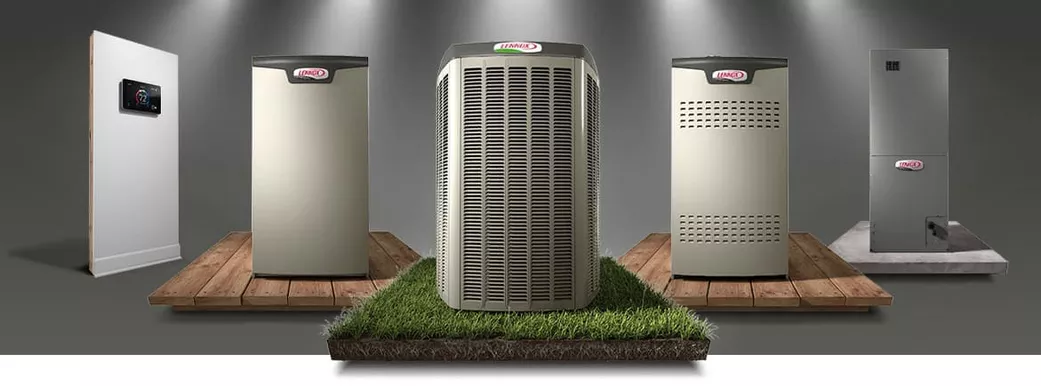
✅ Verdict: Lennox offers the most cohesive ultra-premium step, while Ruud keeps the entire ladder clearer for buyers who may need to scale features to budget.
Customer Support & Warranty
🟦 Ruud: Registration brings 10-year parts at the flagship tier and strong furnace heat-exchanger terms. The Rheem-Ruud distribution web usually stocks the boards, ECM motors, and sensors that keep repair timelines reasonable, and matched-set guidance helps retain communicating features after service events. In markets with dense wholesaler coverage, parts pickup and turnaround feel brisk and predictable.
🟪 Lennox: Registration likewise provides 10-year parts and robust heat-exchanger coverage for Signature furnaces. Dealers trained on the communicating platform tend to keep systems within approved coil and control pairings, which preserves features and eases diagnostics. Parts availability is excellent in many metros, though timelines can be more sensitive to regional stocking than to the platform itself.
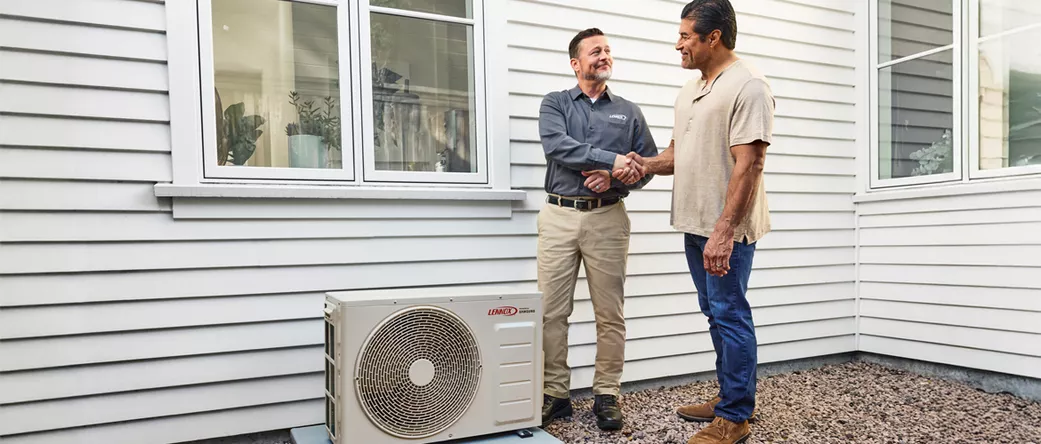
✅ Verdict: Ruud feels more uniformly supported where its distributor web is thick, while Lennox delivers a polished service experience that can vary with local stocking depth.
Energy Efficiency
🟦 Ruud: The UA19AY lands in the premium SEER2 bracket (SEER2 is today’s seasonal cooling efficiency test), the U98MV reaches ultra-high AFUE (AFUE is gas furnace fuel-to-heat efficiency), and the UP19AY posts strong HSPF2 numbers (HSPF2 is seasonal heating efficiency for heat pumps). Real savings come from part-load behavior: an inverter compressor and an ECM blower (ECM is an electronically commutated motor that modulates speed precisely) run long, low-power cycles that trim on-off losses and steady indoor humidity. With sealed ducts and charge verified by superheat and subcool checks (temperature readings that confirm refrigerant is boiling and condensing in the right places), double-digit reductions versus 12–14 SEER legacy gear are common.
🟪 Lennox: The SL28XCV is built for top-sheet SEER2 targets, the SLP99V pushes AFUE toward the practical ceiling, and the SL25XPV couples those gains with high HSPF2. Low-speed depth keeps coil temperature and airflow aligned to the load, which lets published efficiency carry into muggy shoulder seasons rather than living only in lab conditions. In right-sized homes with sensible airflow targets, bill cuts are not only large but repeatable year to year.
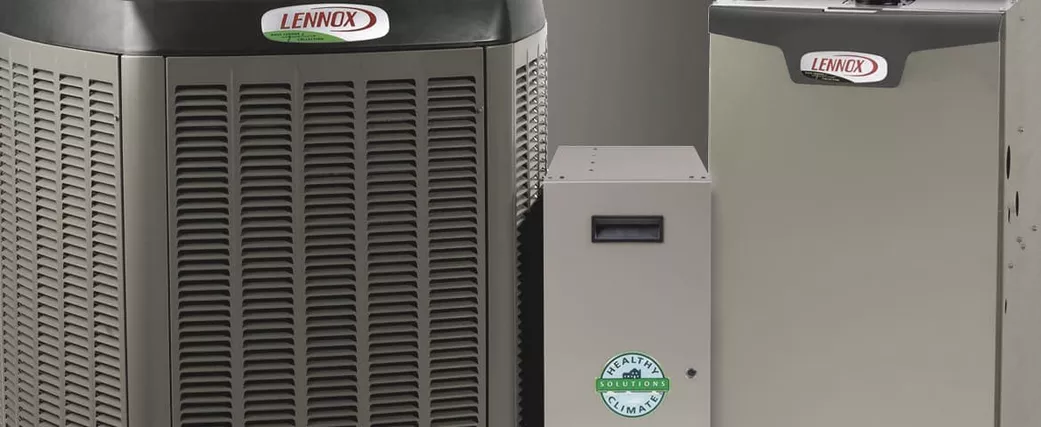
✅ Verdict: Lennox leads on peak AC ratings and matches on furnace efficiency, while Ruud delivers real-world savings that track closely when sizing, airflow, and charge are dialed in.
Smart Features & Connectivity
🟦 Ruud: EcoNet is a communicating thermostat system (a control that exchanges live data with equipment so modulation targets comfort rather than simple on-off) that coordinates compressor speed, blower cfm, and coil temperature to meet temperature and humidity setpoints efficiently. Zoning, dehumidify-on-demand, IAQ accessories, and event logs live under one roof, which helps technicians fix causes rather than symptoms and keeps features intact after service. Third-party thermostats can run the gear, but staying in-ecosystem preserves staged airflow during humidity pulls and optimized dual-fuel logic.
🟪 Lennox: iComfort integrates variable-capacity control with zoning, humidity targets, scheduling, app access, and diagnostics that expose coil, fan, and compressor behavior clearly. Accessory integration is treated as part of the system rather than bolt-ons, so comfort logic remains intact after upgrades and service swaps. The interface is approachable, and the control strategy favors steady low-speed behavior that feels invisible rather than gadgety.
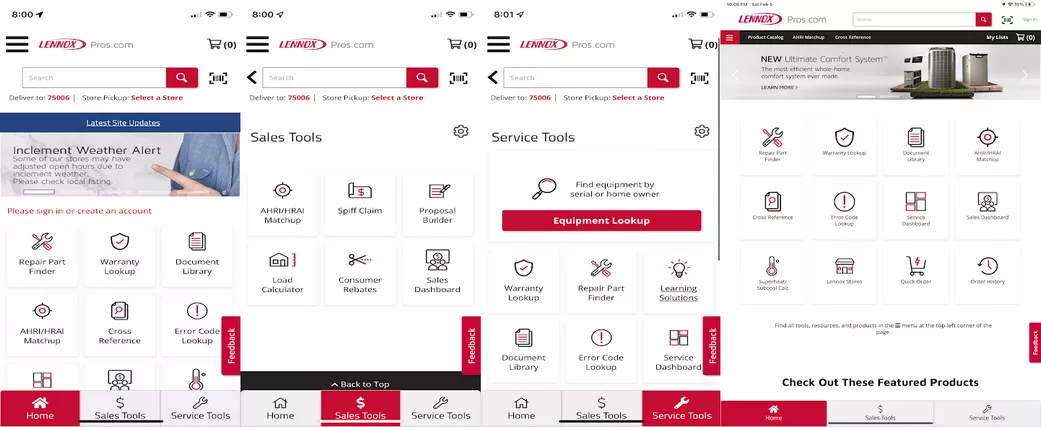
✅ Verdict: Ruud excels at one-umbrella IAQ and dehumidification control, while Lennox pairs a polished interface with deep coordination of variable capacity.
Noise Level
🟦 Ruud: The Endeavor Prestige condenser spends most hours at partial capacity with the inverter and ECM blower working quietly in tandem (ECM is an electronically commutated motor that adjusts speed precisely). Outdoor loudness is rated in dB as a logarithmic scale, so the practical win is to keep the fan and compressor loafing at low rpm; the cabinet bracing, swept fan blade, and a composite-style base pan help damp the higher notes that carry across fences. Inside, gentle blower ramps limit turbulence in trunks, and the biggest swing factor is external static pressure in the ducts, not the box itself (external static pressure is the duct system’s airflow resistance, measured in inches of water column). With a level pad, vibration decoupling on the line set, and adequate clearance from reflective walls, the sound signature settles into a soft background hush.
🟪 Lennox: Signature hardware pushes for a very calm outdoor note at low speed, combining a dense cabinet, tuned fan geometry, and a compressor cradle that sinks vibration before it reaches the shell. Because the control holds deep low-speed operation for long stretches, the yard-side sound is more of a low wash than a tone. Indoors, communicating ramps keep airflow changes gradual, so supply registers whisper rather than whoosh when static is under control and returns are properly sized.
✅ Verdict: Lennox is typically the softer listen in the yard at low capacity, while Ruud stays impressively quiet at the registers when duct static is right.
Cost & Affordability
🟦 Ruud: Installed pricing for a 3-ton reference job with standard labor and no duct replacement commonly lands around AC only UA19AY with matched coil 11,000 to 19,000 USD, furnace only U98MV 5,500 to 9,500 USD, heat pump only UP19AY 12,000 to 21,000 USD. A matched AC plus furnace package often prices 15,000 to 28,000 USD, and dual-fuel typically 17,000 to 32,000 USD. Electrical upgrades, crane work, static-correction duct fixes, and premium IAQ accessories can add 10 to 25 percent, while utility rebates or off-season promos shave the bill.
🟪 Lennox: Signature quotes live at the upper end of the premium bracket. As a 3-ton reference, common numbers are AC only SL28XCV 12,500 to 22,000 USD, furnace only SLP99V 6,500 to 11,000 USD, heat pump only SL25XPV 13,500 to 24,000 USD. A matched AC plus furnace package typically posts 17,000 to 32,000 USD, and dual-fuel sets 19,000 to 36,000 USD, with spreads driven more by accessories, crane access, and duct remediation than by the logo.
✅ Verdict: Ruud usually lands the friendlier quote at a given comfort tier, while Lennox tends to command a premium for ultra-high efficiency and acoustics.
Reliability & Durability
🟦 Ruud: Powder-coated steel panels, rigid corner posts, and all-aluminum indoor coils are built to shrug off weather and reduce formicary corrosion risk over time (formicary corrosion is microscopic copper pitting from household organics). The inverter logic prefers long, low-stress cycles over hard starts, and EcoNet diagnostics preserve fault history so intermittent issues are traceable. Real longevity still comes from fundamentals: precise refrigerant charge verified by superheat and subcool readings, airflow near 350 to 400 cfm per ton with sealed returns, and clean coils that maintain heat transfer in July.
🟪 Lennox: Signature cabinets are dense and quiet, with aluminum fin packs that shed debris well when maintained, helping keep condensing temperatures down in hot spells. Communicating controls surface coil and fan data for faster troubleshooting, but repair timelines depend on distributor stock for exact-board and ECM variants. With by-the-book commissioning and seasonal cleanings, owners can expect long, quiet runtimes rather than nuisance trips.
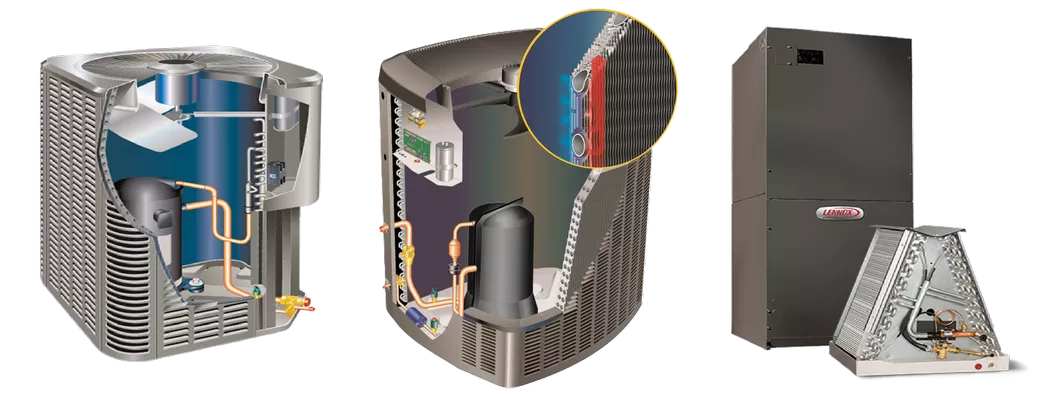
✅ Verdict: Ruud benefits from a broad Rheem-Ruud parts pipeline that keeps summer repairs moving, while Lennox rewards meticulous maintenance with equally durable hardware.
Cooling Performance
🟦 Ruud: At low capacity the inverter keeps the evaporator just cold enough to absorb both sensible and latent load efficiently (sensible is temperature change, latent is moisture removal). During humidity pulls EcoNet trims cfm per ton so the coil stays colder longer, boosting moisture pickup without overshooting the thermostat. A matched indoor coil and a properly set TXV help here too (TXV, or thermostatic expansion valve, meters refrigerant to keep the coil in its sweet spot). The result is long, even cycles, a predictable return-to-supply delta-T across the coil (delta-T is air temperature drop through the coil), and indoor RH that tends to live in the mid-40s to near-50 percent band on muggy days.
🟪 Lennox: At low capacity the inverter keeps the evaporator just cold enough to absorb both sensible and latent load efficiently (sensible is temperature change, latent is moisture removal). During humidity pulls EcoNet trims cfm per ton so the coil stays colder longer, boosting moisture pickup without overshooting the thermostat. A matched indoor coil and a properly set TXV help here too (TXV, or thermostatic expansion valve, meters refrigerant to keep the coil in its sweet spot). The result is long, even cycles, a predictable return-to-supply delta-T across the coil (delta-T is air temperature drop through the coil), and indoor RH that tends to live in the mid-40s to near-50 percent band on muggy days.

✅ Verdict: Lennox delivers a tiny edge in low-speed moisture control on sticky days, while Ruud counters with confident dehumidify-on-demand behavior that steadies RH without overcooling.
Heating Performance
🟦 Ruud: The U98MV modulating furnace meters gas in fine increments with a variable-speed ECM blower (electronically commutated motor that adjusts speed precisely), so supply air climbs steadily instead of surging and coasting. The UP19AY heat pump’s inverter prefers long, low-power heating runs that lift HSPF2 performance (seasonal heat-pump heating efficiency) by avoiding stop-start losses, and defrost is demand-driven so the outdoor coil is cleared only when needed. In dual-fuel builds, EcoNet lets the installer set a balance point (the outdoor temperature where gas becomes cheaper or more comfortable than electric), which hands off smoothly from electric to gas without a perceptible comfort dip. The practical effect is even room temperature on cold evenings and shoulder-season operation that feels unhurried yet decisive.
🟪 Lennox: The SLP99V modulating furnace is tuned for very small burner steps paired with quiet airflow ramps, which makes long winter cycles feel almost invisible from room to room. The SL25XPV heat pump emphasizes deep low-speed heating so the coil stays warm enough to carry meaningful load into colder hours before a defrost is required, and the communicating control coordinates blower and compressor targets to minimize cool-air drafts after defrost. With dual fuel configured, the system leans on efficient electric heat during milder weather and pivots to gas below the economic balance point, keeping operating costs sensible without sacrificing that smooth, steady feel.
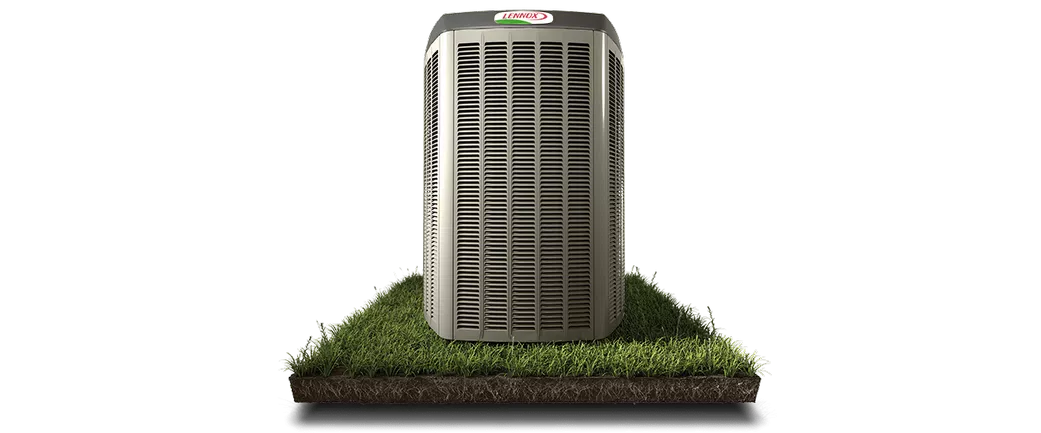
✅ Verdict: Ruud provides a slightly more hands-on dual-fuel setup that installers can tune tightly to local rates, while Lennox delivers ultra-fine indoor temperature stability with especially gentle airflow during long winter runs.
Indoor Air-Quality Enhancements
🟦 Ruud: EcoNet treats filtration, humidity, and ventilation as one plan rather than add-ons. High-MERV media cabinets are supported out of the box (MERV rates how small a particle a filter can capture), and dehumidify-on-demand lowers cfm per ton when indoor RH rises (cfm per ton is airflow per ton of cooling, RH is relative humidity) so the coil stays colder for stronger moisture pickup. Whole-home humidifiers and balanced ventilation with ERV/HRV integrate cleanly (ERV/HRV bring in fresh air while exchanging heat or moisture), and the control preserves blower profiles that keep pressures in check after upgrades. The result is fewer comfort trade-offs when IAQ accessories are added later.
🟪 Lennox: The communicating platform pairs media filtration, electronic or UV purification, humidification, and balanced ventilation with profiles that maintain target airflow and keep external static pressure within blower limits (external static pressure is duct resistance, measured in inches of water column). Long low-speed runs increase filter contact time and let the coil run at a temperature that lifts latent removal when RH creeps up, reducing the cool-but-clammy sensation common to short cycles. Because accessories are treated as matched components, diagnostic histories remain useful after IAQ upgrades, which keeps performance consistent season to season.

✅ Verdict: Ruud shines when building an IAQ plan that evolves over time without upsetting airflow, while Lennox excels at making purified, well-ventilated operation feel seamless once everything is in place.
Installation & Serviceability
🟦 Ruud: Premium outcomes hinge on fundamentals: Manual J for room-by-room load, Manual S for equipment selection, and Manual D for duct sizing and layout. Commissioning targets include 350 to 400 cfm per ton, total external static pressure at or below ratings, nitrogen pressure tests, deep evacuation, and charge verification with superheat and subcool readings (superheat and subcool confirm the refrigerant is boiling and condensing in the right places). EcoNet logs expose coil, compressor, and blower behavior so technicians can validate delta-T across the coil (delta-T is return-to-supply temperature change) quickly, and wide service panels make coil cleaning and board swaps straightforward.
🟪 Lennox: The same discipline applies, with factory coil and control pairings spelled out so variable-capacity behavior and communicating features are preserved after service. The cabinet design favors tight gasketing and clear board access, and the thermostat interface surfaces airflow and temperature data to cut guesswork during commissioning. Where distributors stock the common ECM modules and exact control boards, mid-season repairs are brisk and the system returns to long, quiet cycles without feature loss.
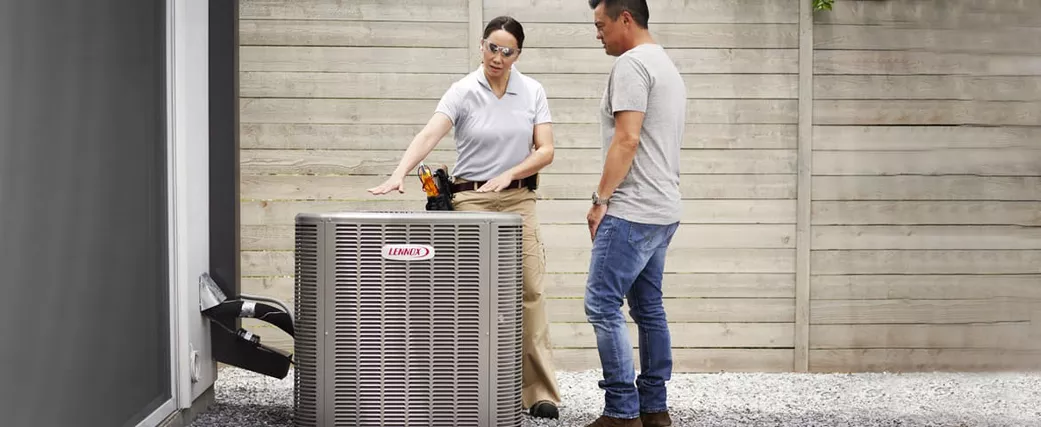
✅ Verdict: Ruud gives technicians transparent data and roomy access that make by-the-book commissioning feel routine, while Lennox rewards precise factory pairings with quick, clean service once the local distributor stocks the right boards and motors.
Quick Buyer Match Guide
🟦🟦 Choose Ruud if you
You want a shopper-clear ladder, an IAQ plan that can grow without upsetting airflow, and dual-fuel controls that can be tuned closely to local utility rates.
🟪🟪 Choose Lennox if you
You want top-tier efficiency and a whisper-quiet outdoor presence, with a communicating stack that makes purified, well-ventilated comfort feel effortless once installed.
Conclusion
Both lineups are true premium comfort solutions. Ruud emphasizes clarity, installer-friendly controls, and an IAQ path that stays stable as you add pieces over time. Lennox pushes for best-in-class efficiency and low-tonality sound while keeping variable-capacity behavior tightly coordinated. If your priority is an upgradeable system that plays nicely with evolving IAQ goals and local rate tuning, Ruud fits the brief. If you are chasing the quietest yard-side note and elite efficiency bundled into a polished, set-it-and-forget-it experience, Lennox is the safer bet.



